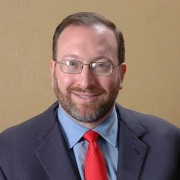Seth Klarman, Baupost Group
- “The average person can’t really trust anybody. They can’t trust a broker, because the broker is interested in churning commissions. They can’t trust a mutual fund, because the mutual fund is interested in gathering a lot of assets and keeping them. And now it’s even worse because even the most sophisticated people have no idea what’s going on.”
- “The single greatest edge an investor can have is a long-term orientation. In a world where performance comparisons are made not only annually and quarterly but even monthly and daily, it is more crucial that ever to take the long view. In order to avoid a mismatch between the time horizon of the investments and that of the investors, one’s clients must share this orientation. Ours do.”
- “In a field dominated by a short-term, relative performance orientation, significant underperformance is disastrous for retention of assets (and therefore the manager’s income), while mediocre performance is not. The only way for a Manager to significantly outperform is to periodically stand far apart from the crowd, something few are willing or able to do.Thus, because protracted periods of underperformance can threaten one’s business, most investment firm’s aim for assured, trend-following mediocrity while shunning the potential achievement of strong outperformance.”
- “By holding expensive securities with low prospective returns, people choose to risk actual loss. We prefer the risk of lost opportunity to that of lost capital, and agree wholeheartedly with the sentiment espoused by respected value investor Jean-Marie Eveillard, when he said, “I would rather lose half our shareholders…than lose half our shareholder’s money…”
- “We continue to adhere to a common-sense view of risk – how much we can lose and the probability of losing it. While this perspective may seem over simplistic or even hopelessly outdated, we believe it provides a vital clarity about the true risks in investing.”
- “Markets are inefficient because of human nature – innate, deep-rooted, permanent. People don’t consciously choose to invest with emotion – they simply can’t help it. So if the entire country became securities analysts, memorized Benjamin Graham’s Intelligent Investor and regularly attended Warren Buffett’s shareholder meetings, most people would, nevertheless, find themselves irresistibly drawn to hot initial public offerings, momentum strategies and investment fads…People would, in short, still be attracted to short-term, get rich quick schemes. In short, we believe market efficiency is a fine academic theory that is unlikely ever to bear meaningful resemblance to the real world of investing.”
- “Most investors take comfort from calm, steadily rising markets; roiling markets can drive investor panic. But these conventional reactions are inverted. When all feels calm and prices surge, the markets may feel safe; but, in fact, they are dangerous because few investors are focusing on risk. When one feels in the pit of one’s stomach the fear that accompanies plunging market prices, risk-taking becomes considerably less risky, because risk is often priced into an asset’s lower market valuation. Investment success requires standing apart from the frenzy – the short-term, relative performance game played by most investors”
- “Diversification for its own sake is not sensible. This is the index fund mentality: if you can’t beat the market, be the market. Advocates of extreme diversification—which I think of as over diversification—live in fear of company-specific risks; their view is that if no single position is large, losses from unanticipated events cannot be great. My view is that an investor is better off knowing a lot about a few investments than knowing only a little about each of a great many holdings. One’s very best ideas are likely to generate higher returns for a given level of risk than one’s hundredth or thousandth best idea.”
- “Is or past success the result of skill or luck? Is it replicable, or merely a lengthy run of good fortune? We are confident that our success has not been the result of a favorable spin of a roulette wheel or a timely roll of the dice. It has been truncated, not heightened, risk. Our gains over the years have been earned, banked, redeployed into the next advantageous investment, and thereby compounded, again and again. With sound investment principles, a committed and dedicated investment organization, a healthy and vigilant awareness of what can go wrong, and a strong sell discipline, investing is more akin to a high-yielding, periodically volatile, and non-guaranteed bank account than a game of chance. Can gains be lost? Of course they can, through laziness, sloppiness or hubris. But such a reversal is hardly inevitable, especially when one is aware of these risks. We work assiduously to maintain our gains, emphasizing as always the preservation of capital and, only when attractive opportunities become available, its enhancement.”
- “While you know that our investments often stand apart from those of the crowd, you may not be aware of how deeply this contrarianism permeates our activities. Our investments can be remarkably contrary; we regularly search the “new low” list for investment ideas, while shunning names on the “new high” list. We purchase what the crowd is dumping. We typically buy stocks in the face of Wall Street “sell” recommendations, and reduce positions in their “buys” We eagerly assess financially distressed companies for opportunity while the world experiences revulsion. For us, analytically complex, litigious, stigmatized, and shunned situations bought at the right price form the backbone of a limited risk portfolio of opportunity.”
- “We are able and willing to concentrate our capital into our best ideas. These days, other investors’ idea of “risk control” is to own literally hundreds of small positions while making no size able bets, a strategy that might also be labeled “return control”. It is clearly an advantage, but by no means without risk, to be able to concentrate our exposures. We work exceptionally hard to ensure that our largest positions are indeed our most worthwhile opportunities on a risk-adjusted basis.”
- “Many of today’s institutional asset allocators are not evidently worried about the enormous amounts of capital surging into alternative investments. They are now asking the relevant bottoms-up question: Where are today’s bargains? They are not following that thread to build, investment by investment, or one carefully chosen fund at a time, a diversified portfolio of undervalued investments. Instead, they are typically focused on the answer to three questions, each of which demonstrates a reluctance to think for themselves:
What has worked lately?
How can I diversify my way to investment success?
How can I invest like the institutional thought leader of this era; in other words, like Yale?
Here’s why these questions range from remarkably foolish to largely irrelevant.
Investing is mean reverting. What has outperformed lately will not, and cannot, grow to the sky. Sustained out performance in any particular sector of the markets is eventually borrowed from the future, to be given back either slowly through sustained under performance or quickly through price declines. What has worked lately is popular, widely owned, and bid up in price, and therefore generally anathema to good future results. But human nature makes it extremely difficult for people to embrace what has recently fared poorly.”
“Given how hard it is to accumulate capital and how easy it can be to lose it, it is astonishing how many investors almost single-mindedly focus on return, with a nary of thought about risk. Lured into their slumber by the ‘Greenspan-now Bernake-put’, an investment mandate of relative and not absolute returns, as well as a four-year period of generally favorable market conditions, investors seem to be largely oblivious to off the radar events and worst-case scenarios. History suggests that a reordering of priorities lies in the not too distant future.”



